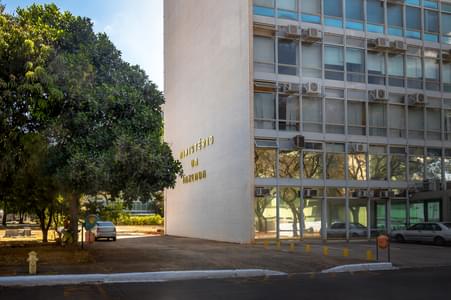During the bonanza years, we chose the easy path of increasing public spending, inside and outside the budget, without paying heed to the quality of spending and structural questions. It didn’t work. The investment rate rose only slightly, and society became discontented.
Infrastructure investment in the country is one prominent example of this. Public banks and pension funds of state-controlled companies played a leading role in financing infrastructure, with an important presence of state-controlled companies as well.
According to Cláudio Frischtak, the investment rate in the sector rose very little: it reached 2.3% of GDP in 2013, which fell short of offsetting the depreciation of capital, which consumes some 3% of GDP. Many investments were mistaken, such as in the shipbuilding industry, Sete Brasil, stadiums, Comperj, and failed concessions. There was a large outlay for little return, and Brazil slid downhill in the infrastructure rankings.
The main error was thinking that money alone is the solution, neglecting the definition of priorities, the quality of projects and unmanageable risks – political risk, legal uncertainty, changes in rules and laws, environmental licenses, and cases of bankruptcy and default – which pushed up project costs when not rendering them downright impossible to cover.
Governmental subsidies should not, and indeed cannot, offset so many risks. Furthermore, the misguided economic policy and consequent recession undermined the profitability of the projects. The manageable risks – project risk and market risk – became intractable in some cases.
In parallel, some peer countries have been doing better at attracting private investments. Peru entered investors’ radar screens as one of the most innovative countries in Latin America regarding development of infrastructure. Of note are streamlined bureaucracy and mechanisms to encourage the quality of projects and private participation, through adequate distribution of risks and returns, and the flow of resources (from concluded projects to new ones).
India has become a global standout with public-private partnerships (PPPs), involving financing by banks and insurers along with public funding through the India Infrastructure Finance Company Limited. The fund obtains money from the internal and external markets, with government guarantees. It makes direct loans and refinances financial institutions that invest in infrastructure.
The participation of the private sector is frequent in successful projects globally. The private sector contributes its expertise in the design of projects and their financial structure, and helps oversee the construction phase. The higher cost of financing can be offset by strong incentives and adequate controls. The public sector can contribute to the planning and financing in the design and construction phase, to reduce the manageable risks and strengthen guarantees. The private sector alone is not enough, and the public sector alone functions poorly, without even factoring corruption into the picture.
In similar vein, zeal is necessary regarding pubic investments in the budget. The cutback to investments, which has provided slack to comply with the fiscal targets, has been the target of criticism, due to the possible negative impact on the country’s potential growth.
With structural reforms still awaiting approval, the maneuvering room is narrow, however. Governmental activism can be counterproductive if it increases public debt and the interest rate. With reforms, it will be possible to win the privilege of higher investment, by establishing priorities and careful execution. Without this, inaction will be better.
Hopefully, the lack of money will serve as a stimulus to do a better job.









